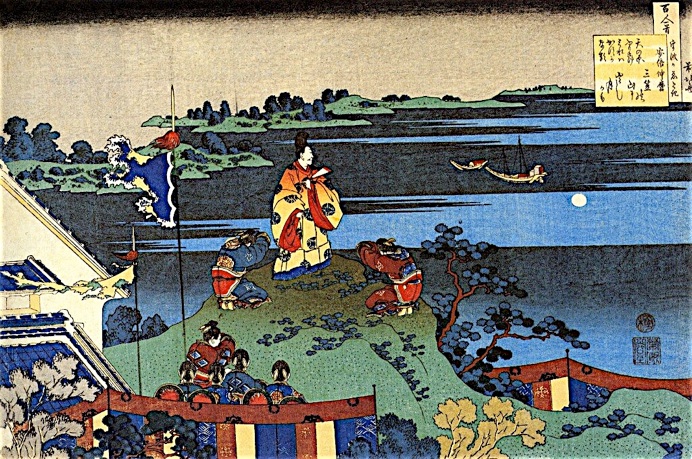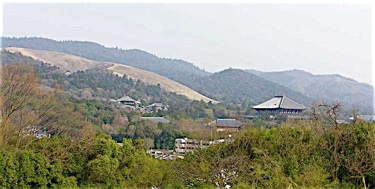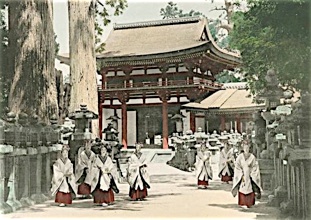安倍仲麿


天の原
ふりさけ見れば
春日なる
三笠の山に
出でし月かも
あべのなかまろ
あまのはら
ふりさけみれば
かすがなる
みかさやまに
いでしつきかも
Abe no Nakamaro
When I look up at
The expanse of heaven,
Is this the same moon
That rose on Mount Mikasa
From the land of Kasuga?

Hokusai

Abe no Nakamaro (c. 698 - c. 770) was a scholar, administrator, and waka poet in the Nara period. Little is documented about his life except that he went to China in 717 and remained there until his death. In China he passed the civil-service examination and rose to the position of Governor-General. In 753 he wanted to return to Japan but a shipwreck forced him back to China.
Kasuga Taisha is a famous temple at the foot of Mount Mikasa (now called Wakakusa), near Nara, the poet's home.
On a preliminary drawing for the above woodcut Hokusai put the moon above the horizon. That he changed his mind for the final print could have been influenced by Tsurayuki’s Tosa Diary (written ca. 935):
“The twentieth-night moon appeared. With no mountain rim from which to emerge, it seemed to rise out of the sea. Just such a sight must have greeted the eyes of Abe no Nakamaro when he prepared to return from China long ago.”
The Kasuga shrine was the tutelary shrine of the Fujiwara, and it is said that the shrine was the place for envoys to pray for a safe return before their journey, which could have been the memory Nakamaro had in mind.
View over Todai-ji
Mt Mikasa (Wakakusa) left and Kasuga (right)


Kasuga shrine
